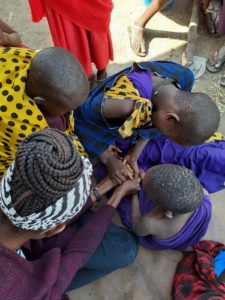
We all admittedly enjoy a good story; whether it’s a true story reiterated by a narrator or a fantasy that creates a whole new universe in our minds, stories are what connects people through relatability, cultures, behaviours and opinion. But what makes a story a good one? What gets you keen beginning to the end of an enticing story being told, watched or read. We will take a look at a few key characteristics of a good story.

Nothing is quite as frustrating if not confusing as a story that seems to have no lesson or main point. Storytellers understand that if you are to tell a story, it must have a general or even meaningful meaning intertwined into the ups and downs of the story, or else it will lose its audience. Great examples are stories of the rabbit and the hyena (sungura na fisi) that were short but captivating stories told to children so they could learn simply the consequences of bad habits such as lying, stealing and being a bad friend.
Human nature keeps us interested in a story if there is a problem the main characters have to overcome; we want to know how they will solve the problem and if they will have a happy ending! Why are we so captivated by the challenges characters face in a story? Well, because usually, this is how we relate to the character; we have challenges of our that we face and try to overcome and so it is no wonder we relate this way with our characters from a story. We cheer them on and hate the “bad guy” and are happy when the “good guy” wins.
Ever had to read a story with no structure? When a story is all over the place, it is difficult to get anything from it. Confused, bored and sometimes frustrated listeners lose interest in a story once it has no clear beginning, middle, cliff-hanger and ending. The clearer the structure of a story, the better the story will be. Storytellers know this very and spend time practising telling their story assuring it structured and has little to no jargon in between.
A storyteller knows that a story has to be an experience for both themselves and their audience. This means that when on a high, the storyteller expects a reaction of happiness or other positive emotions; when a cliffhanger is introduced, the storyteller hopes that the audience is fully focused on every word in anticipation of what comes next. This tells the storyteller that the audience is just as involved as they are in the story.
Have you ever been on a bodaboda with a driver eager to tell you their story?! Surely, you know that a good chunk of this story will be taken with the wind! The place and timing of storytelling are important because the storyteller wants the audience to be relatively available and comfortable enough to listen to the story.
Going back to “Hadithi za Sungura na Fisi” here, stories can be fictional or based on a true story. Whether you are reciting the story of Mwalimu Nyerere or creating a fable for children, stories allow our imagination to relive experiences or create entirely foreign places, people, species, cultures and much more. The sky is far from the limit in this case.
Most of the above resonated with the common storytelling medium in our communities in Tanzania; the art of standing and reciting or creating a story for your listeners. However, did you know that storytelling can be done through many other creative ways? One of the other common ways in Tanzania is through dance! Yes, all the 120 tribes in Tanzania use songs and chimes to express many emotions, experiences and traditional messages through song and dance with both young and old people in vibrant colours and a deep cultural understanding of the stories they are telling through song and dance. Other examples include animation, videos, books and art.
Related: